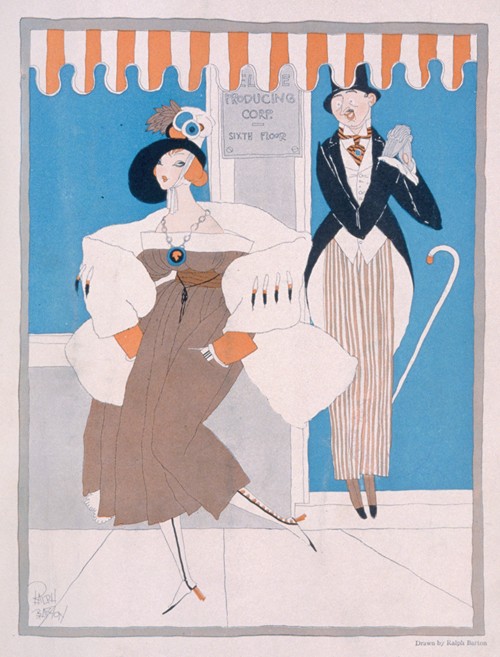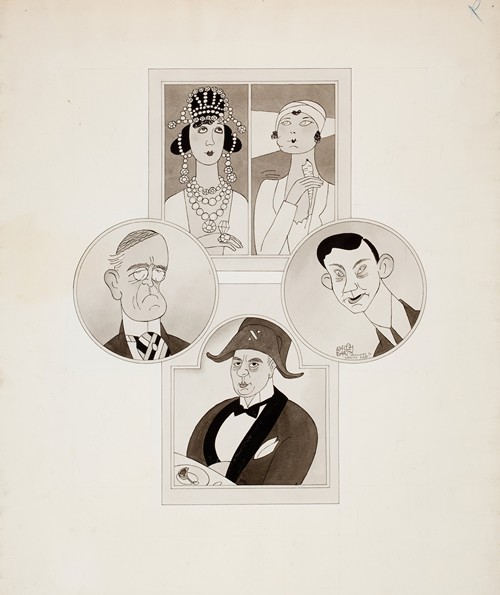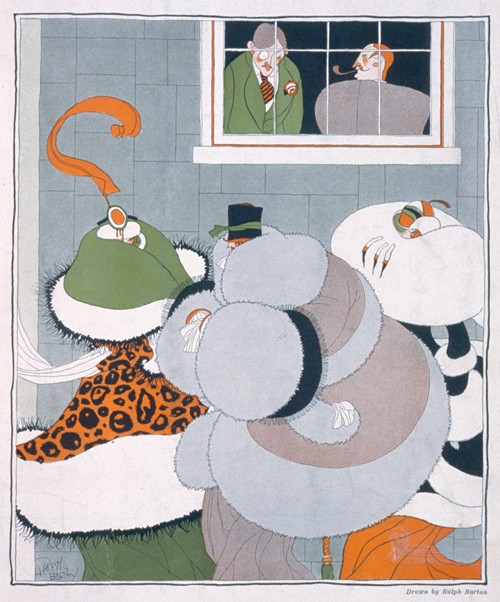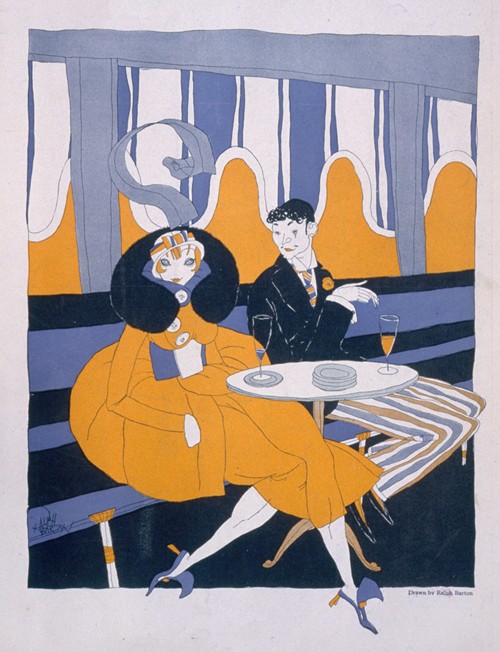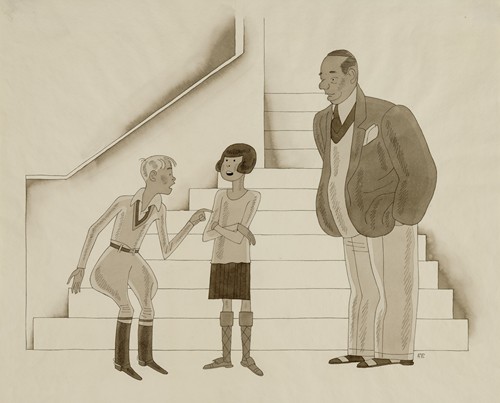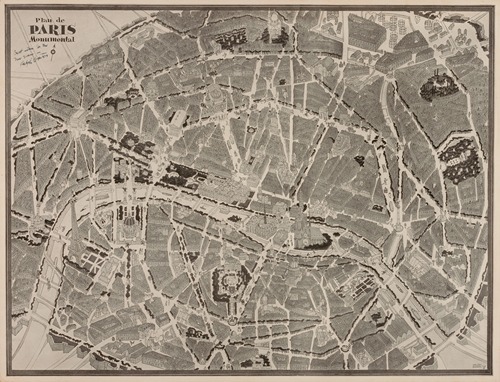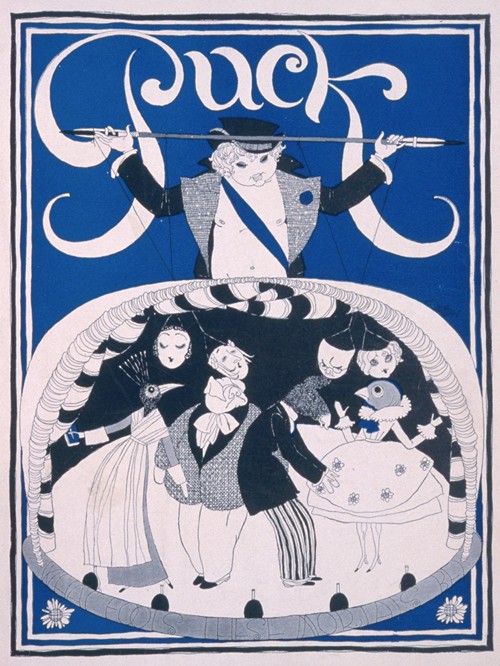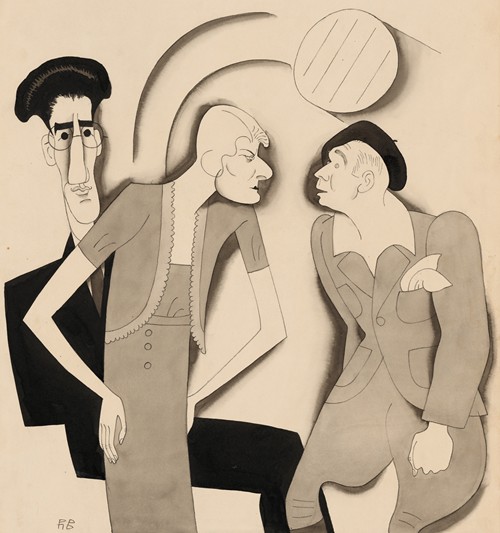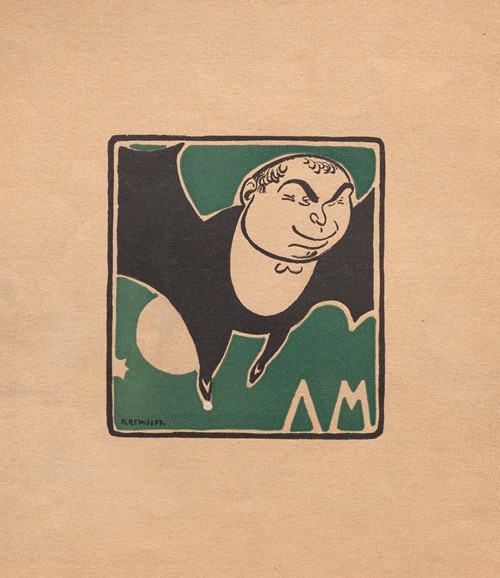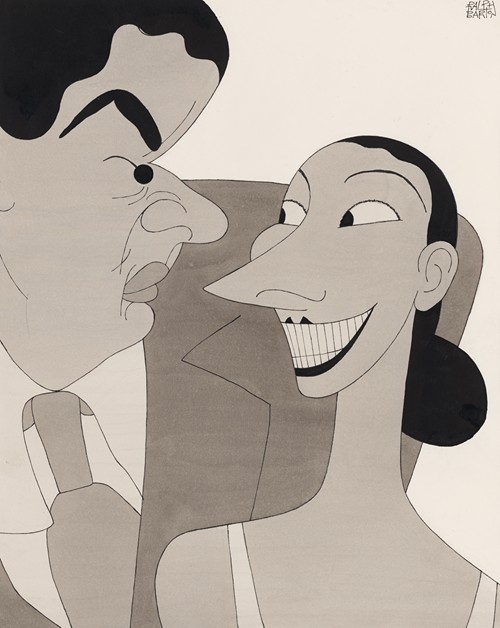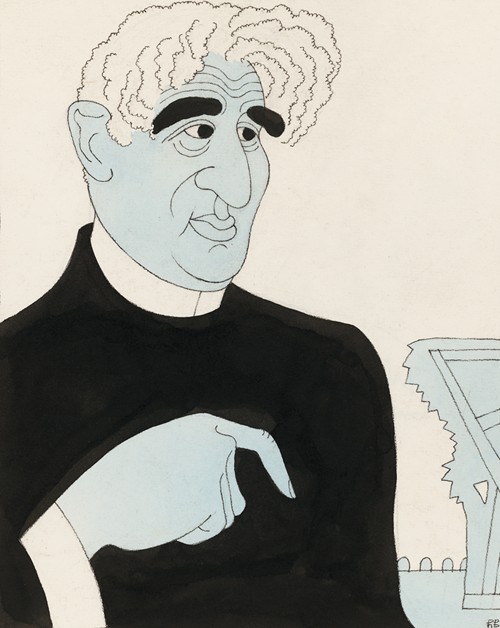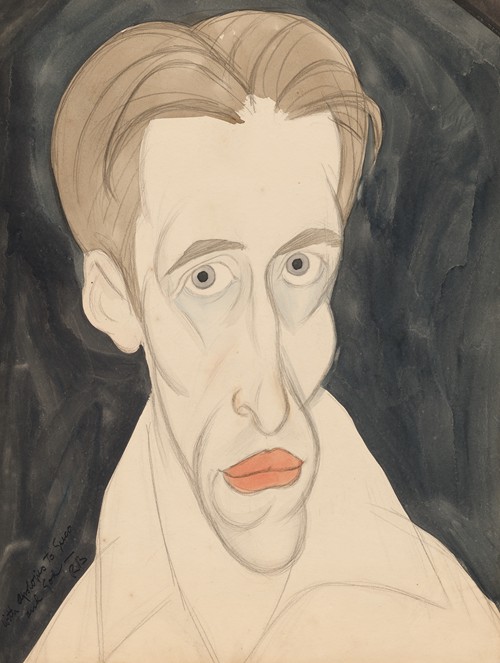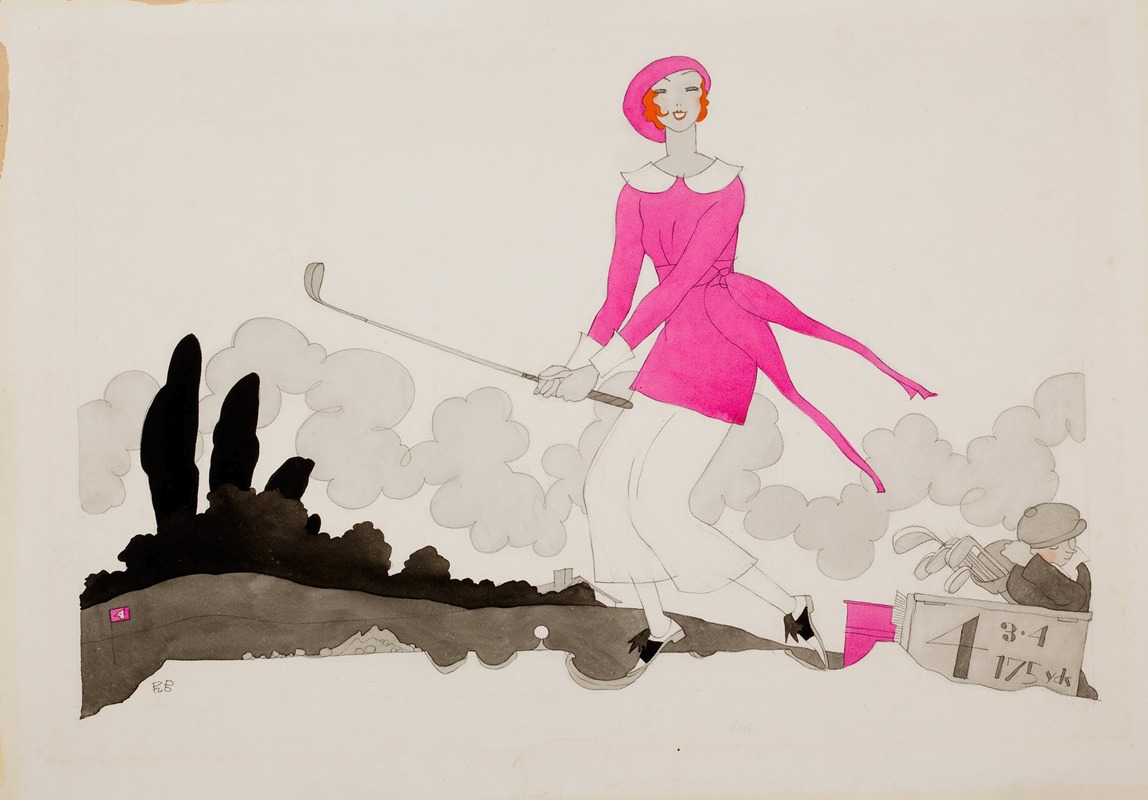
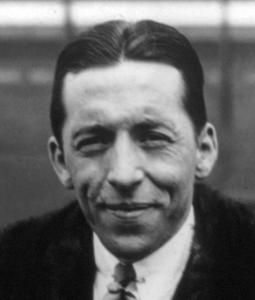
Ralph Waldo Emerson Barton was an American artist best known for his cartoons and caricatures of actors and other celebrities. Though his work was heavily in demand through the 1920s and is often considered to epitomize the era, his personal life was troubled by mental illness, and he was nearly forgotten soon after his suicide, shortly before his fortieth birthday.
Ralph Barton was the youngest of four children born to Abraham Pool and Catherine Josephine (Wigginton) Barton. His father was an attorney by profession, but around the time of Ralph's birth made a career change to publish journals on metaphysics. His mother, an accomplished portrait painter, ran an art studio. The young Barton showed his mother's aptitude for art, and by the time he was in his mid-teens he had already seen several of his cartoons and illustrations published in The Kansas City Star and the Kansas City Journal-Post.
His first break, or national exposure, came in 1912 when Barton sold an illustration to the humor magazine Puck. Encouraged, he moved to New York City, where he found steady work with Puck, McCall's and other publications.
In 1915 Puck magazine sent Barton to France to sketch scenes of World War I. It was then that Barton developed a great love of all things French, and throughout his life he would return to Paris to live for periods of time. In 1927 the French government awarded Barton the Legion of Honour
Barton's first caricature was of Thomas Hart Benton; his last, of Charlie Chaplin. In between he knew everyone and drew everyone in the social and cultural scene of New York. Some of his most famous works were group drawings, and perhaps the most noted was a stage curtain created for a 1922 revue, depicting an "audience" of 139 faces looking back at the real theater-goers. "The effect was electrifying, and the applause was great," said another caricaturist of the era, Aline Fruhauf.
Much of Ralph Barton's work from the mid-1920s onward was for The New Yorker magazine, which he joined as an advisory editor from its very beginning in 1924. He would also be a stockholder in the publication. Other prominent magazines of the era to feature his work were Collier's, Photoplay, Vanity Fair, Judge, and Harper's Bazaar. While many would be published unsigned, there was no mistaking Barton's unique style. Ralph Barton would illustrate one of the 1920s most popular books, Gentlemen Prefer Blondes. With the urging of friend Charlie Chaplin, Barton also made one movie, Camille. The short film featured such notables as Paul Robeson, Ethel Barrymore, and Sinclair Lewis.
On May 19, 1931, in his East Midtown Manhattan penthouse apartment, Barton shot himself through the right temple. He was 39 years old.
